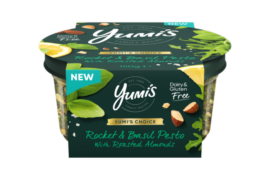Addressing dysbiosis is a key strategy in integrative veterinary medicine. Microbiome support is part of treatment for gastrointestinal diseases, skin allergies, immune-mediated diseases, ear infections, recurring urinary tract infections, behavioural problems, liver diseases, metabolic disorders and cancer. So, what is dysbiosis?
Dysbiosis refers to changes in the diversity of the microbiome. It may also mean an increase in pathogenic species. A leading cause of gastrointestinal dysbiosis is treatment with broad-spectrum antibiotics. Other causes include gut disorders, diet, medications, chemotherapy and stress.
Our understanding of the structure and function of the microbiome is evolving. To keep it simple, I like the following definition: The microbiota refers to the complex ecosystem of microbes (bacteria, viruses, fungi and protozoa) within the gastrointestinal tract (ie: who is there). The microbiome refers to their extensive gene content (ie: what they do).
A robust microbiome is important in defense against pathogens, immune modulation, metabolism and providing vitamins and nutrients. It digests complex carbohydrates and provides short-chain fatty acids to nourish intestinal cells. It regulates the motility of the gut and reduces infl ammation.
Dysbiosis is linked to chronic enteropathies and can be both the cause and consequence of diarrhoea. It contributes to immune system dysfunction, atopic dermatitis, genitourinary tract infections, mental illness and respiratory disease.
Benefi cial microbes have important functions — Clostridium hiranonis converts primary bile acids into secondary bile acids. These have a role in suppressing pathogens such as Clostridia perfringens and E. coli.
How do we address dysbiosis? It’s not as simple as giving probiotics. Probiotics don’t colonise the gastrointestinal tract. They may, in combination with prebiotics, encourage a healthier microbiome. Specific individual probiotic species can be used, or multispectral products, containing high concentrations of beneficial species. The yeast probiotic Sacromycetes boularrdii is given to pets treated with broadspectrum antibiotics, to mitigate dysbiosis and reduce gastrointestinal side effects.
Specific prebiotic supplements, or foods, encourage beneficial microbes. A clean, raw or lightly cooked diet, higher protein and lower carbohydrates, encourages Clostridium hiranonis. Prebiotic foods such as globe artichoke, asparagus and fennel bulb can be added. Foods high in fibre such as cooked orange vegetables encourage a diverse healthy microbiota.
Omega-3 essential fatty acids can be considered a microbiome superfood. In people, they can reduce pathogenic species and increase benefi cial species, and can help reverse dysbiosis after gastrointestinal disease. Animal studies show that Omega-3s help maintain gut wall integrity and immunity when combined with the gut microbiota. They also influence the gut-brain axis through their effects on the microbiota.
If our dysbiosis strategy isn’t working, we can consider a fecal microbiome transplant (FMT). We give a stool sample from a healthy dog (or cat) “donor” to our patient, via rectal transplantation. A healthy “donor” would be a young but fully grown healthy dog or cat that has never had antibiotics. They must have no behavioural problems, because of the impact of the biome on behaviour — also no history of allergies or gut problems.
Ideally, our donor eats a whole-food diet. Their stool is checked for pathogens and assessed for dysbiosis. All of this increases the chance of a successful transplant.
Our patient is prepped by stopping some medications, as well as probiotics and digestive enzymes. The success of FMT is increased if we disrupt the biofi lm. This is the matrix produced by pathogenic species, offering them protection against antibiotics, and perpetuating inflammation. Biofi lm inhibits the retention of our benefi cial microbes. Biofi lm “disruptors” include ginger, berberines, N acetyl-cystine and ozone. The enema itself is relatively non-invasive and doesn’t require sedation.
FMT is not for every patient with dysbiosis, but it is another useful integrative tool we’ve added to our growing toolbox.
References available on request











